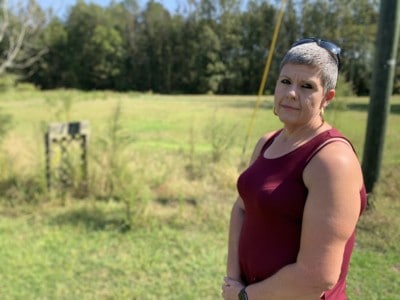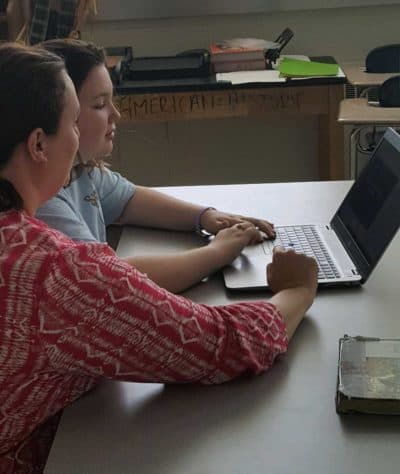

Inequities within our society that have persisted over decades have never been more evident than in 2020. The COVID-19 pandemic has illuminated the digital divide for learners and has laid bare the challenges that today’s college students face around ensuring their basic needs are met. In addition to the pandemic, racial injustice in America further highlights the need to eliminate equity gaps.
“Like a flash of lightning in the night, the pandemic revealed all the cracks and fissures hidden in the landscape and gave us a stark and unsparing look at the cavernous wealth and attainment gap before us in our Black and Brown urban communities, in the immigrant communities of our gateway cities and in our poor, white communities in the rural regions,” Dr. Pam Eddinger, president of Bunker Hill Community College, said in the recent Dallas Herring lecture, entitled Insights from the Pandemic: The Reckoning and the Hope at Our Nation’s Community Colleges.
To reduce inequities within our society, we have to address the root causes of these disparities. And while there are many potential solutions, wide-open access to education has long been a hallmark of the American dream — though one that is not realized for Black, Latinx, and Native American populations. North Carolina’s Career and College Promise program provides college coursework through the local community college to high school juniors and seniors. Career and College Promise increases access to the state’s higher education pipeline and has the potential to reduce college attainment gaps.
Community colleges can be a catalyst for this needed change given their open access missions, embedded nature within the community, and credential programs intended to meet the needs of lifelong learners and the local workforce. North Carolina’s Community College System (NCCCS) is uniquely positioned to achieve these aims. The 58 community colleges within NCCCS were specifically designed to be within 30 minutes of any North Carolinian, and my research confirms this is true for more than 99% of residents. Simply being located near a community college reduces barriers to access because a prospective student does not have to travel far and is likely to have more familiarity with their local college.
Another benefit of having community colleges embedded locally across the state is the partnerships between the college and the K-12 schools. These partnerships can lead to early and increased exposure for K-12 students to the college environment. Many of North Carolina’s community colleges conduct campus tours as early as eighth grade, community colleges are home to Early College High Schools, and most importantly, community colleges provide opportunities for high school students to earn college credit through the Career and College Promise program.
Within Career and College Promise, there are two pathways for students to choose from. The first is the College Transfer Pathway which consists primarily of general education courses meant to transfer to one of the University of North Carolina System (UNC) institutions. That pathway is governed by the state’s Comprehensive Articulation Agreement (CAA). The CAA is a joint effort between NCCCS and the UNC System and it establishes the foundation of course transfer between the two systems with the goal of increasing students’ degree completion through maximizing applicability of credit. While the agreement is not perfect, the CAA establishes the necessary structure and organization around successful between-system transfer. The second pathway is Career and Technical Education meant to prepare students with the knowledge, skills, and credentials to enter the workforce.
The goal of Career and College Promise is to increase the number of completed associate and bachelors degrees for North Carolina’s residents by providing early access to college while a student is in high school. Early access to college allows students to “try on” college while in the more familiar environment of high school. Students are able to practice their new time management skills, study skills, and experience the academic rigors of college with the added support often offered by faculty and staff. College courses taken early in high school that apply to students’ associate and bachelor’s degrees also save students valuable time and money as they pursue higher education.
While these benefits are common across many dual enrollment programs, North Carolina takes further steps to broaden access. For instance, the North Carolina state legislature has recognized the value of creating a pipeline into and through postsecondary education and covers the cost of tuition for the Career and College Promise. This funding allows students to take advantage of the program without fewer financial constraints.
There are costs such as transportation, books, and supplies which are not covered by the program. However, tuition is the largest college expense, making it an important factor when thinking about how to reach low-income and historically underserved students. Career and College Promise is offered statewide, further reducing geographic barriers in access to education.
Further, the legislature has funded career coaches who are professional staff members that help high school students explore their college and career options. Community colleges across the state also have designated Career and College Promise liaisons who facilitate the delivery of the program. These factors combined not only “promise” to cover tuition but open the promise of a college education to many students who may not have considered going to college otherwise.
The benefits of Career and College Promise extend beyond increasing student access to higher education. In my own research, I found that students who participated in the program in 2015-2016 and/or 2016-2017 had a higher probability of enrolling in a North Carolina community college after high school, had higher persistence rates, had higher community college graduation rates, and had a higher college GPA when compared to students who did not participate in the program. The Career and College Promise program has all of the right components: free tuition, broad accessibility, support for students, and participation is associated with positive educational outcomes. As of the 2019-20 academic year, the program enrolls more than 70,000 students across the state.
While the foundation of the program is firmly established and there is broad support and participation in the program, Career and College Promise is not equitably reaching populations of students that are historically underserved in higher education. Relative to all North Carolina 10th graders in the 2014-2015 academic year, students who go on to participate in the College Transfer Pathway are more likely to be female (63% compared to 50%) and white (76% to 56%), to speak English at home (93% compared to 86%), and to have a higher high school GPA (4.0 on average, compared to 3.2).
In another aspect of my research that focuses specifically on historically underrepresented students, it is apparent that students that meet these criteria are more likely to participate in the Career and Technical Education Pathway. Relative to their counterparts in the College Transfer Pathway, students in the Career and Technical Education Pathway are more likely to be Black (20% compared to 11%), Latinx (11% compared to 6%), to be economically disadvantaged (48% compared to 30%) and to speak Spanish at home (11% compared to 5%).
Given we know that Black, Latinx, and low-income students are among the groups of students least likely to access higher education, it is important that state-wide marketing, recruitment, and retention policy focus on these populations so that North Carolina’s College Transfer Pathway provides postsecondary opportunities for students who may not already be college-bound. The postsecondary pipeline from the high schools through the community colleges and to the universities in North Carolina is strong, and Career and College Promise has already opened access to more than 27% of high school graduates across the state.
However, for North Carolina to fully realize the potential impact of Career and College Promise on postsecondary attainment, to reduce inequities and close postsecondary attainment gaps, the program must provide equitable access for Black, Latinx, and Native American populations.




